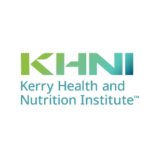Protein is one of the strongest trends in the food and beverage industry, but there aren’t many scientific studies which measure consumer preferences and perceptions toward high protein foods and beverages. A study recently published in the journal Appetite tried to answer some important questions using a qualitative focus group approach in European consumers.
Questions researchers sought to understand
- Do consumers understand the role of protein in health?
- Can they differentiate between protein-enriched products from ‘conventional’ products inherently high in protein? Does the difference matter to them?
- What types of products do consumers want protein from the most? Do they prefer protein from a plant or animal origin in these products?
- How do attitudes differ by age group?
The researchers grouped participants into either a ‘mixed-age’ group (MA, <56 years old) or an ‘older’ population (OL, >56 years old).

Results: understanding of protein function.
Study participants in both age groups associated the phrases below with protein’s function. Older German participants also identified protein’s role in weight control.
- Building block of the human body and muscles
- Vital for activity (body and brain)
- Important for healthy and active living
Some, but not all, groups were able to point out that animal-based protein is more complete than plant-based protein.
These results can be used to build messaging that resonates with consumers of high-protein products, or identify areas consumers may need more education on to understand the appropriate health benefits.
Results: role of foods with increased protein in the diet
Interestingly, both age groups were skeptical about the importance of increased protein products in the diet because they mentioned many people do not know if they are getting enough or too much protein. This low understanding of protein needs is especially important for older populations, since our protein requirements increase as we age to support mobility and independence. Education to aging populations about the increasing importance of protein with age to support independence, as well as creation of products which resonate with them (e.g. energy, vitality, active rather than focusing on disease prevention or aging-related terms), are opportunities identified by these results.
Both groups seemed to prefer getting their protein from foods inherently rich in protein (foods like yogurt, nuts, meat, etc) rather than products with increased protein content (e.g. protein bars). They generally saw foods they’d expect to find protein in as a natural, healthy part of their diet. This suggests increasing protein content of foods already recognized as a protein source is a potentially more favorable strategy than adding protein to foods commonly lacking in protein.
Results: plant vs animal origin
Many participants mentioned a perceived benefit of plant proteins for health and for environmental reasons. Bread, legumes, protein bars, cereals, and yogurts were the most common products to be listed by participants as enriched with plant protein. Yogurt, meat, dairy, and fish were the most common products listed as enriched with animal protein. Both groups listed yogurts, bread, cereals, and protein bars as the protein-enriched products most likely to be bought and consumed. The mixed-age group was generally more favorable toward foods with increased protein content, while the older group was more skeptical.
Among plant protein sources, the mixed-age group preferred cereal protein due to familiarity and sensory attributes, while the older group preferred legumes due to the higher protein content. Both groups generally saw soy as something to avoid, despite science showing its role in a healthy diet.
Want to know more about the study? Read the full article “Foods with increased protein content: A qualitative study on European consumer preferences and perceptions“.

 We bring the voice of science to some of the most challenging questions facing the food and beverage industry day to day through our network of over 1000 Kerry scientists, external collaborators, and our Scientific Advisory Council. Our content comes straight from scientists and experts in nutrition, taste, food, and sensory sciences to make sure we are providing up-to-date, credible information to guide people shaping the future of food.
We bring the voice of science to some of the most challenging questions facing the food and beverage industry day to day through our network of over 1000 Kerry scientists, external collaborators, and our Scientific Advisory Council. Our content comes straight from scientists and experts in nutrition, taste, food, and sensory sciences to make sure we are providing up-to-date, credible information to guide people shaping the future of food. 

